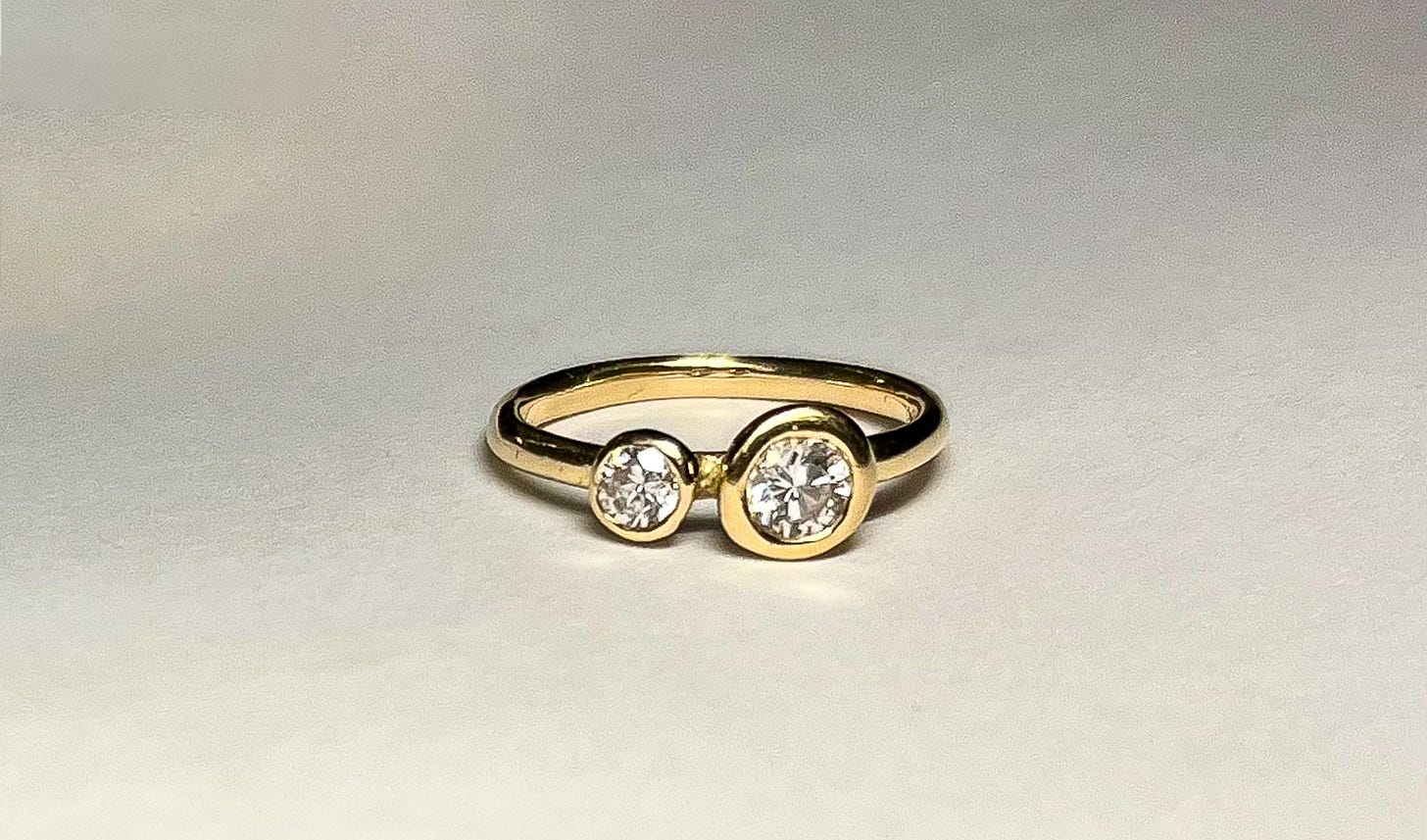As I learn more about stone-setting, I’m increasingly curious about the origins of stones. This week I thought I’d pause my usual behind-the-scenes stories and instead share my research into how technology can support transparency in the diamond industry.
For diamonds and engagement rings in particular, there is a lot of discourse around natural versus lab-grown.
There are compelling arguments on both sides for natural or synthetic diamonds (that perhaps I can dive into another time), but for all diamonds I believe that consumers deserve to know their origins.
This belief led me to wonder about the application of blockchain technology in the diamond industry.
What is blockchain?
Blockchain is a decentralized, distributed digital ledger technology.
I used to work in venture capital and when blockchain startups were all the rage a few years ago there seemed to be a lot of forced applications (unsurprisingly in hindsight, not everything needs an immutable digital record).
However, diamonds are particularly well-suited for this technology.
For the diamond industry, blockchain creates a transparent record of a diamond's journey from mine or lab to market. Each diamond is assigned a unique ID which includes information about its characteristics. This digital ID is recorded on blockchain, creating a tamper-proof history of the stone's origin and journey through the supply chain.
Enhancing transparency and traceability
For natural diamonds, blockchains allow consumers to verify that their purchase is not a conflict diamond and has been ethically sourced. Consumers can validate the diamond’s provenance along with details such as its carat, color, and clarity.
Lab-grown diamond producers can leverage blockchain to substantiate sustainability claims. Many synthetic diamond wholesalers and retailers focus on the negative environmental impact of natural diamonds. However, they generally don’t emphasize (for obvious marketing reasons) that producing lab-grown diamonds is an extremely energy-intensive exercise. The FTC cautioned lab-grown diamond producers against using unqualified environmental claims in their marketing, urging them to support such claims with evidence.
Blockchain enables the registration of energy usage and sources for lab-grown diamond production. This information can help verify the eco-friendliness of lab-grown diamonds.
Ensuring authenticity

The diamond industry has long grappled with issues of fraud and counterfeiting.
Blockchain provides a solution by creating unalterable records of diamonds at each stage of the supply chain. This makes it more difficult for fake or stolen diamonds to enter the market.
A lab-grown diamond is formed in a controlled environment using processes that mimic the formation of natural diamonds. They are visually and chemically identical to natural diamonds - so much so that many have an inscription on their girdle indicating that they are manmade in order to tell them apart.
Unlike natural diamonds, lab-grown diamonds have not retained their value well. Despite year-over-year sales increases over the past decade in lab-grown diamonds, prices fell significantly in the same time period. Generic price estimates of a loose stone put lab-grown diamonds at around one-third the average price of natural diamonds.
For consumers, blockchain can help verify that a stone is natural and not a synthetic diamond being passed off as natural.
Blockchain adoption
The diamond industry has yet to see widespread adoption of blockchain, but there are notable platforms like Tracr (from De Beers) and Everledger.
As a budding jeweler, I like the confidence of a diamond’s journey that blockchain gives. That said, the core problem the technology solves for is lack of trust.
If you trust your jeweler, retailer, wholesaler, and supplier, a piece of paper or someone’s word suffices. In cases where that may not suffice, blockchain offers an alternative verification method.
~~
I hope you learned a few new things about the diamond industry in this read!
Next week I’ll resume sharing my jewelry designs and the stories and process behind them. I love learning about jewelry-making techniques and the industry more broadly, so I’ll share educational tidbits more regularly going forward as well.



